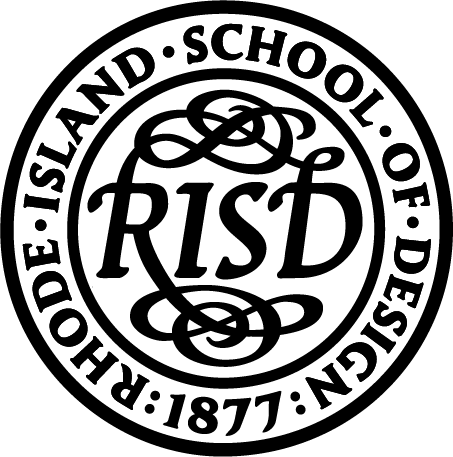ABSTRACT
This study aims to explore a systematic method to stimulate and maximize the use of the urban space in the context of urban densification, expanding urban space usage in the dimension of time and space. In this context, urban space is reclaimed as the notion of overlap between public and private space in urban figure-ground.
The research focuses on Providence as a study area that encompasses different transects of the urbanized American city and faces typical densification issues. It has strategically turned the issue of densification into opportunities for improving social interactions and space utilization. The “Driftscape” principle with its three dimensions: boundary, temporality, and connectivity has been proposed as a flexible strategy that rethinks the potential dimension behind existing areas and doubling their uses, which questions the power of the conventional “right of way,” provides a new understanding of the utilization of urban space.
Larger scale space and density analysis
Image
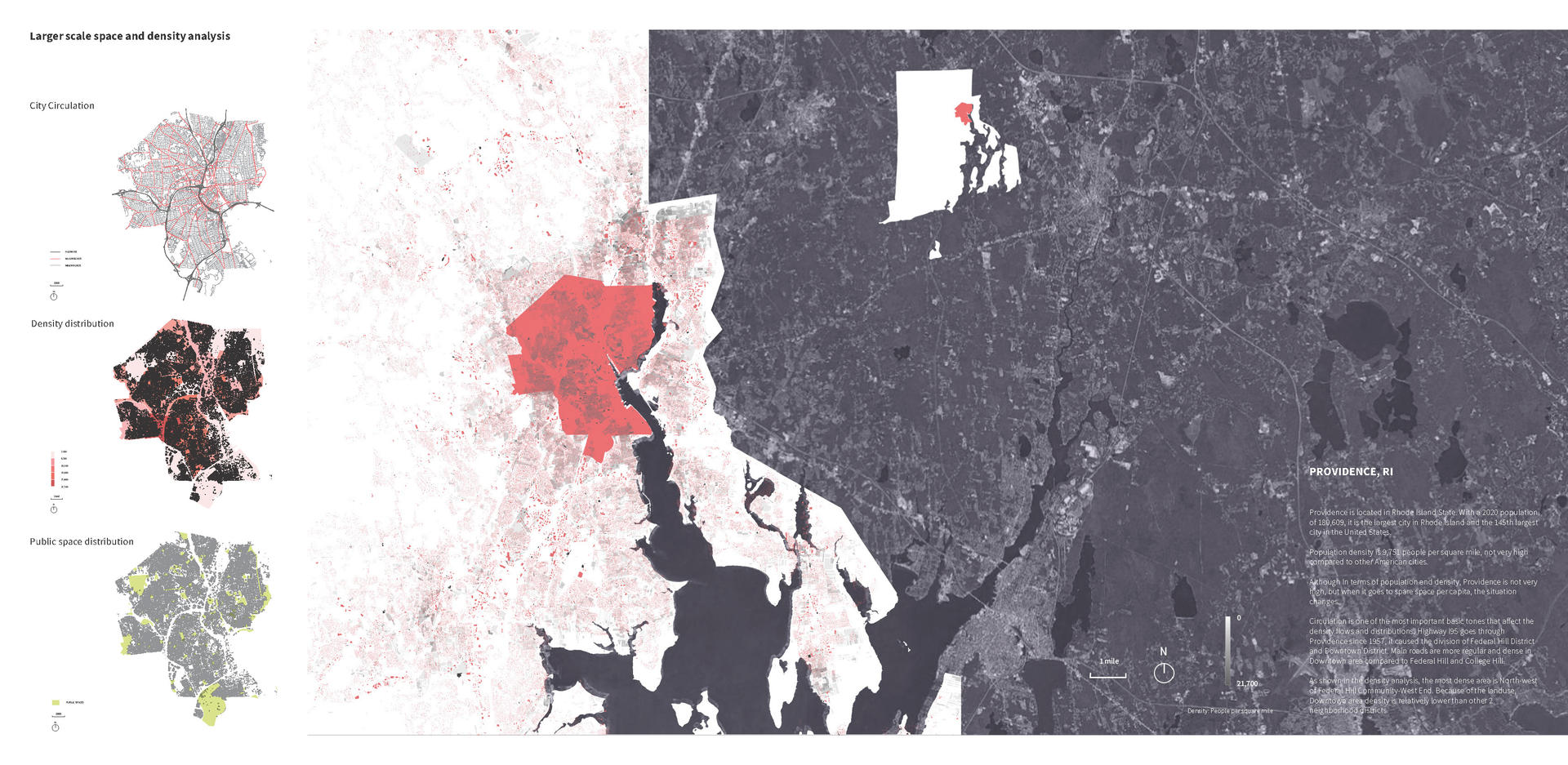
City Density Comparison and Providence public lots usage
Image

Design Principle
Image
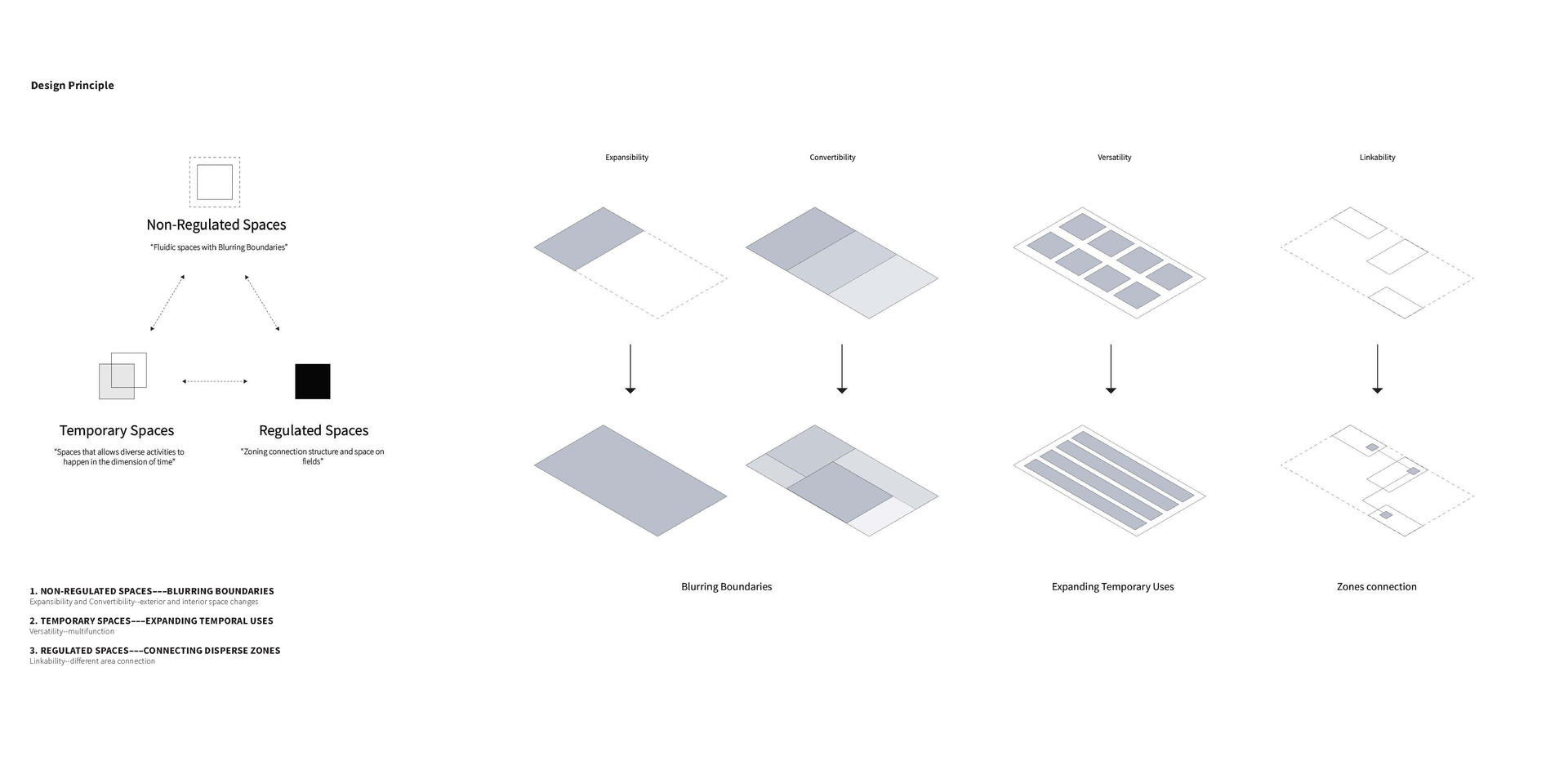
Design Principle-Blurring boundaries
Image
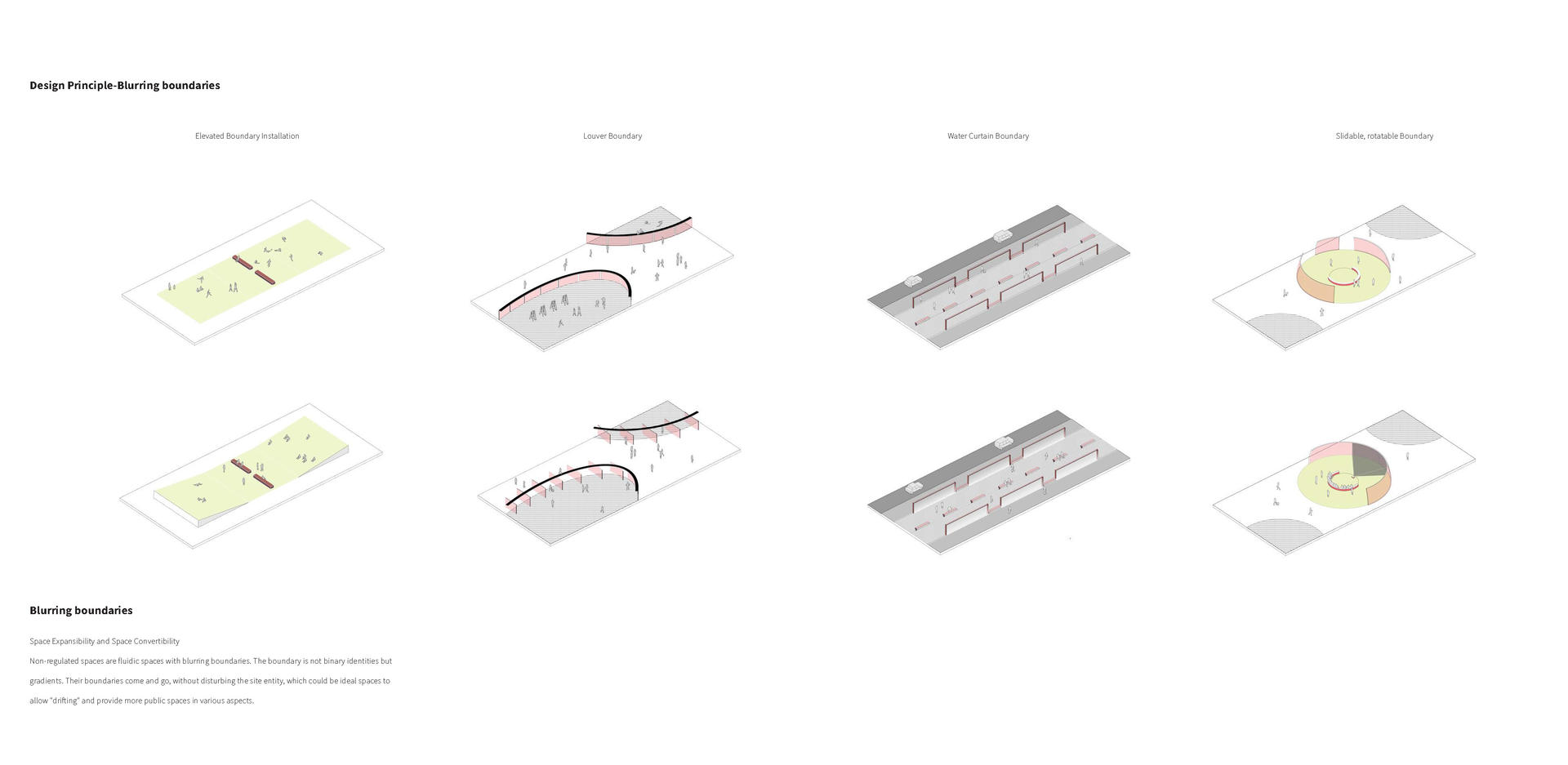
Design Principle-Temporary Uses and Site Connection
Image
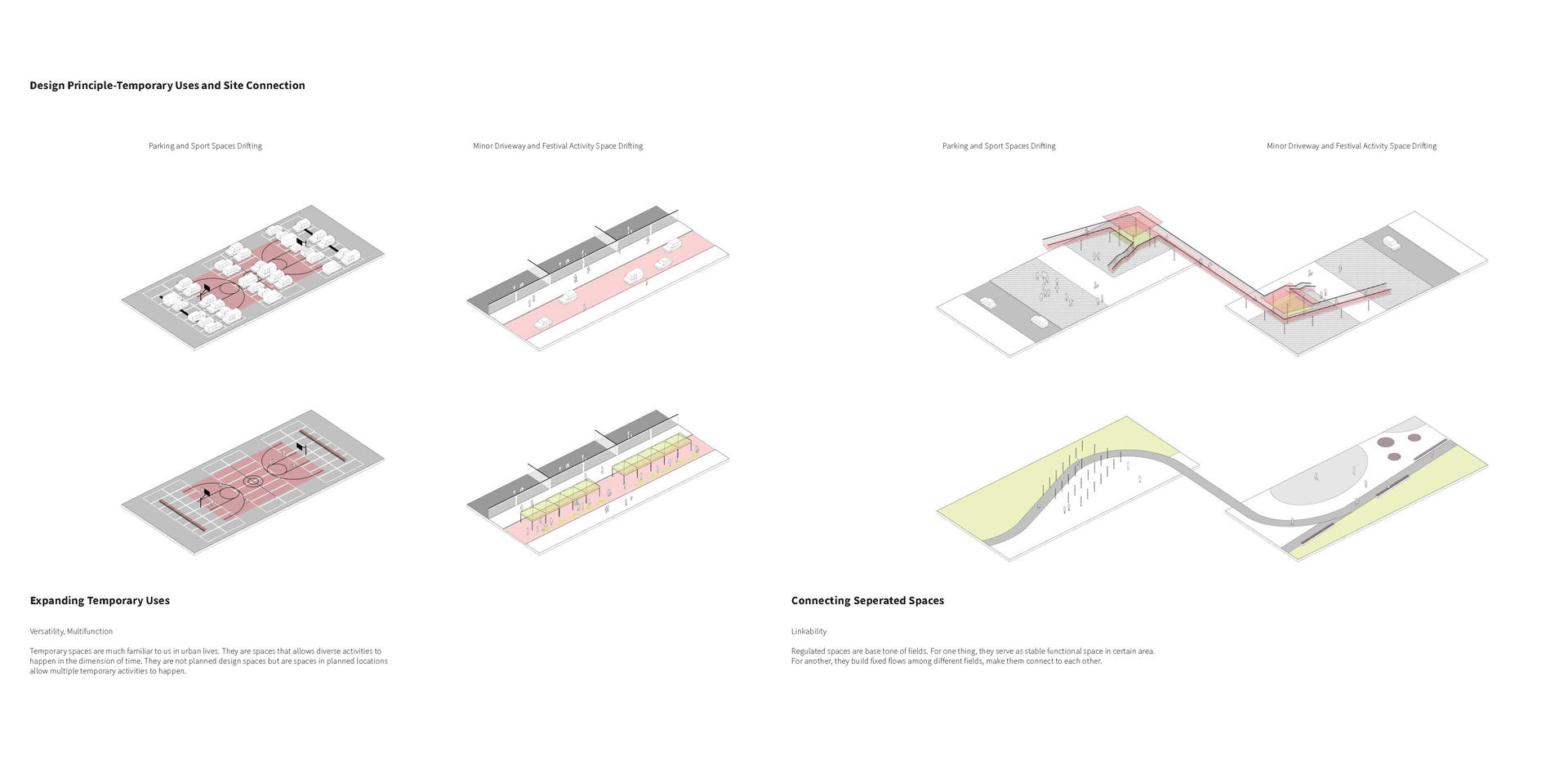
Proposed Districts in Providence
Image
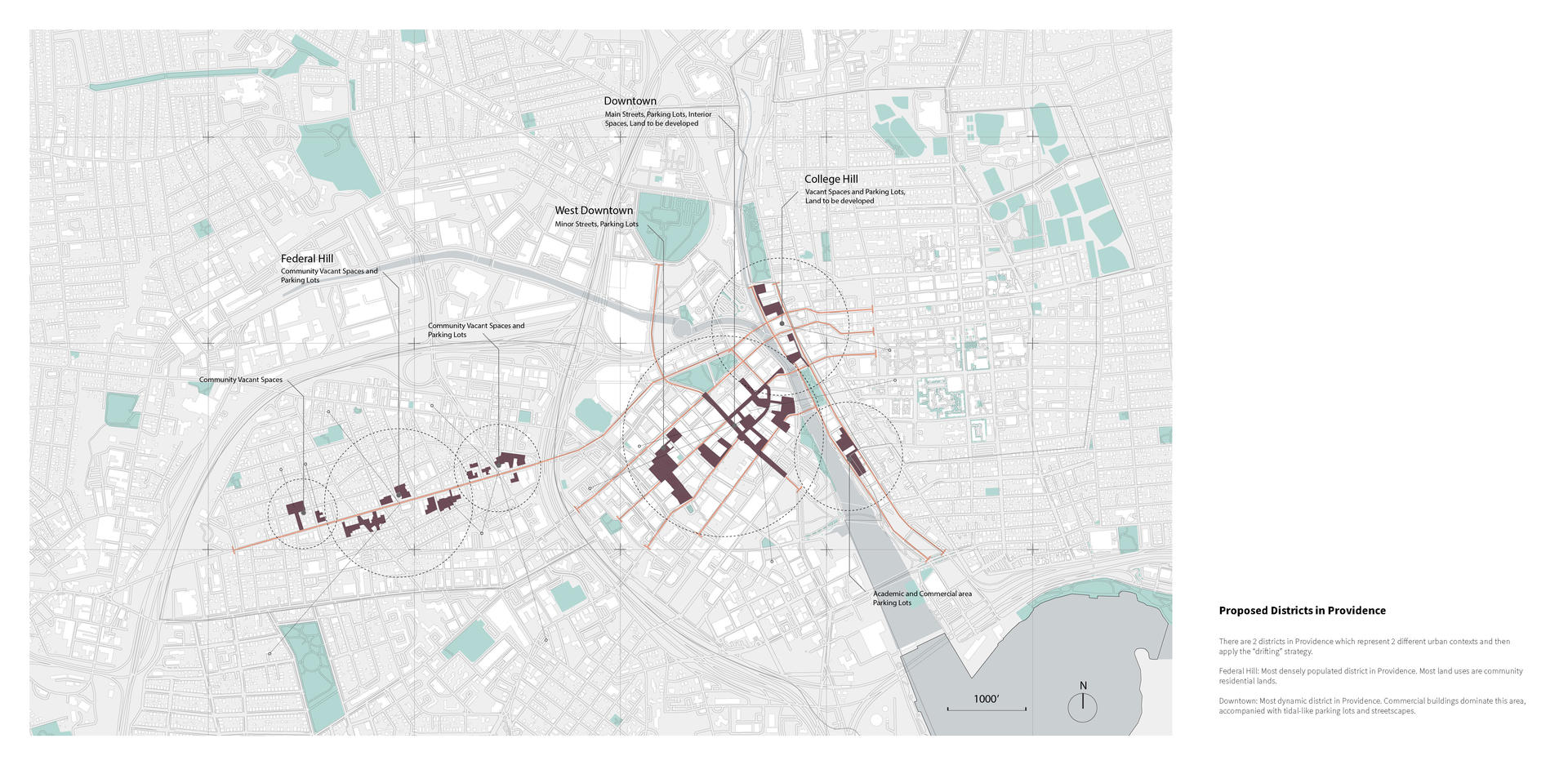
Purposed Space Strategy and Site Layers
Image
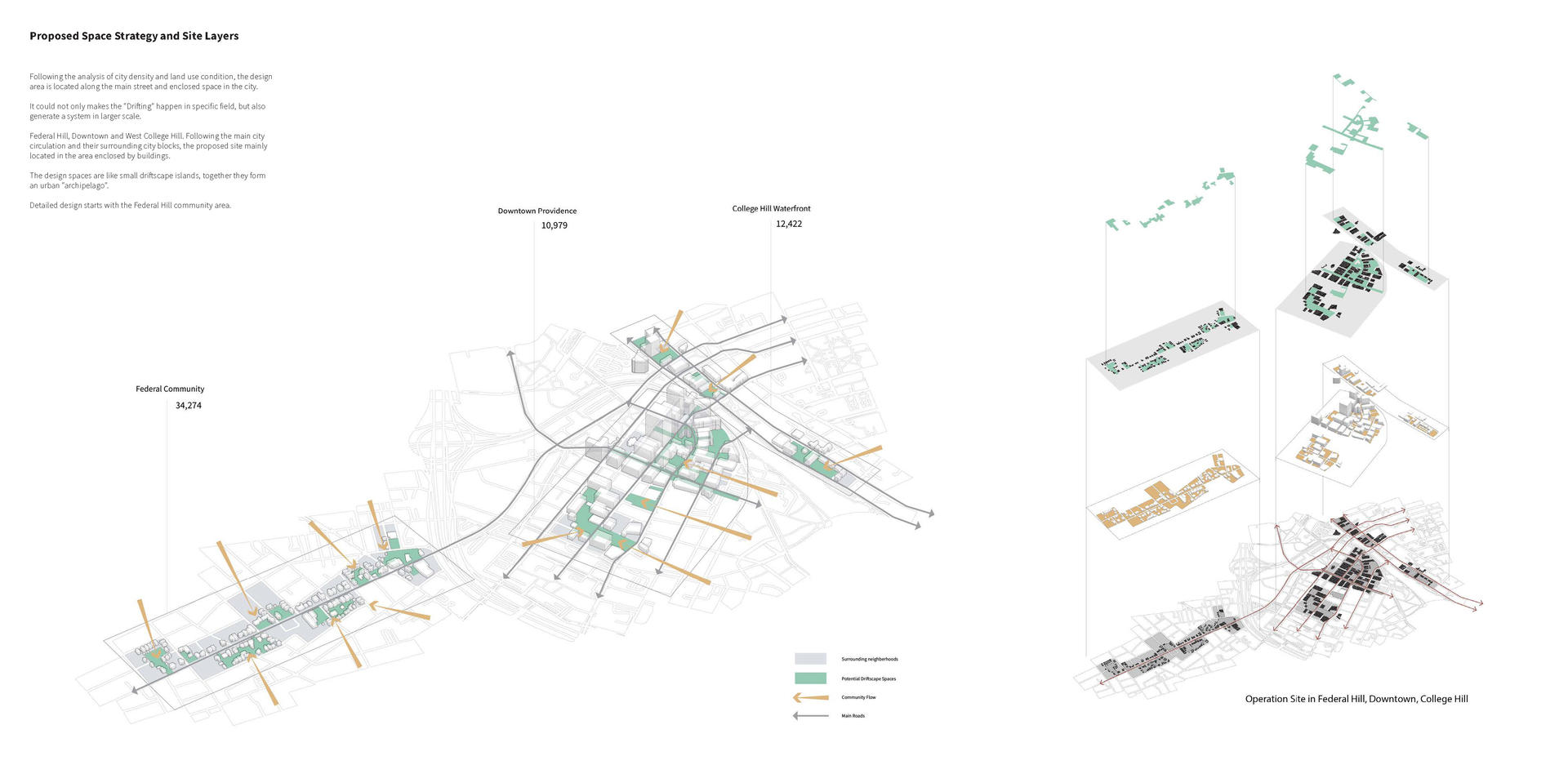
Federal Hill Space Analysis and Participants Flow, Site Planning
Image
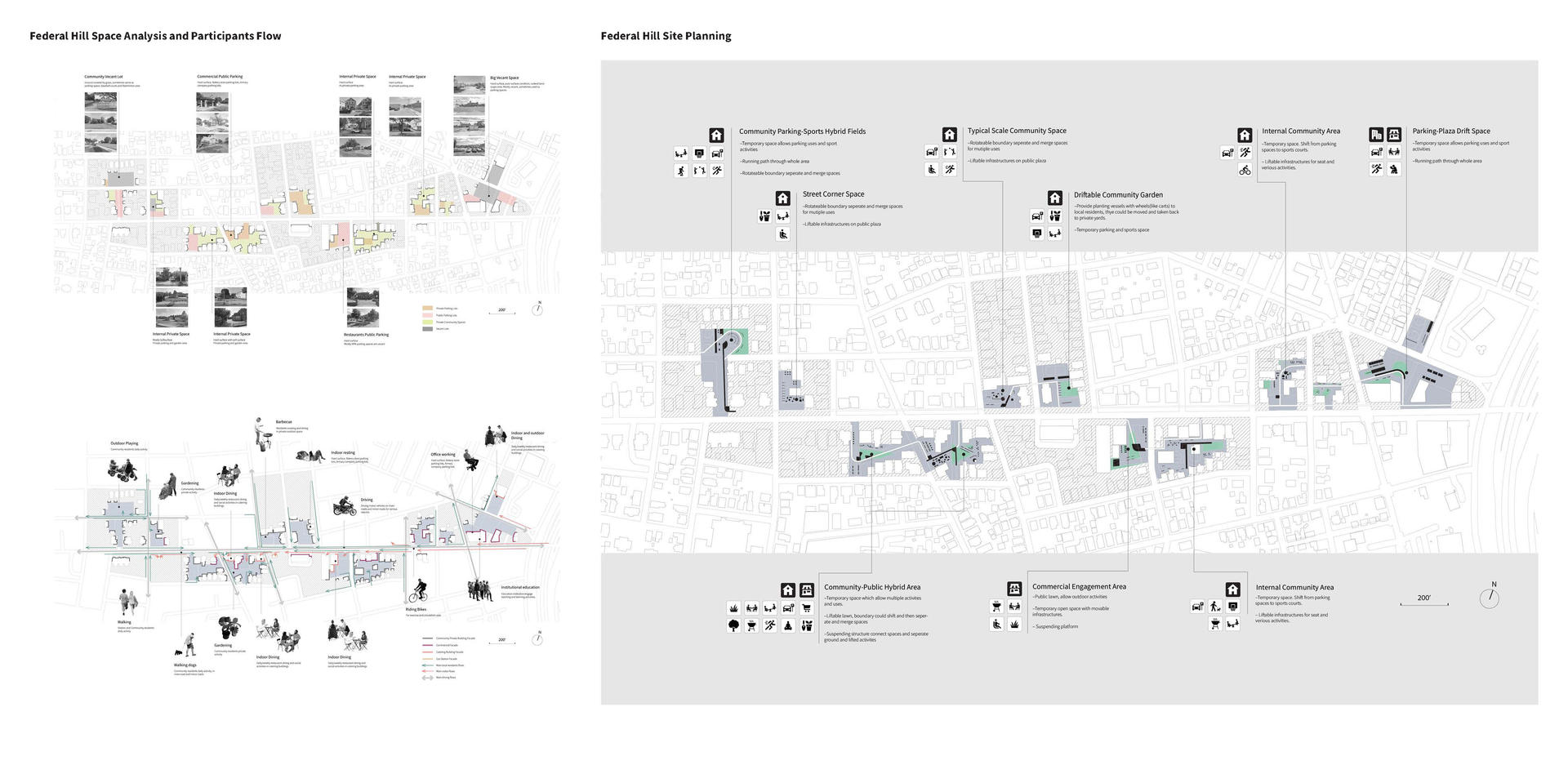
Federal Hill Site Design
Image
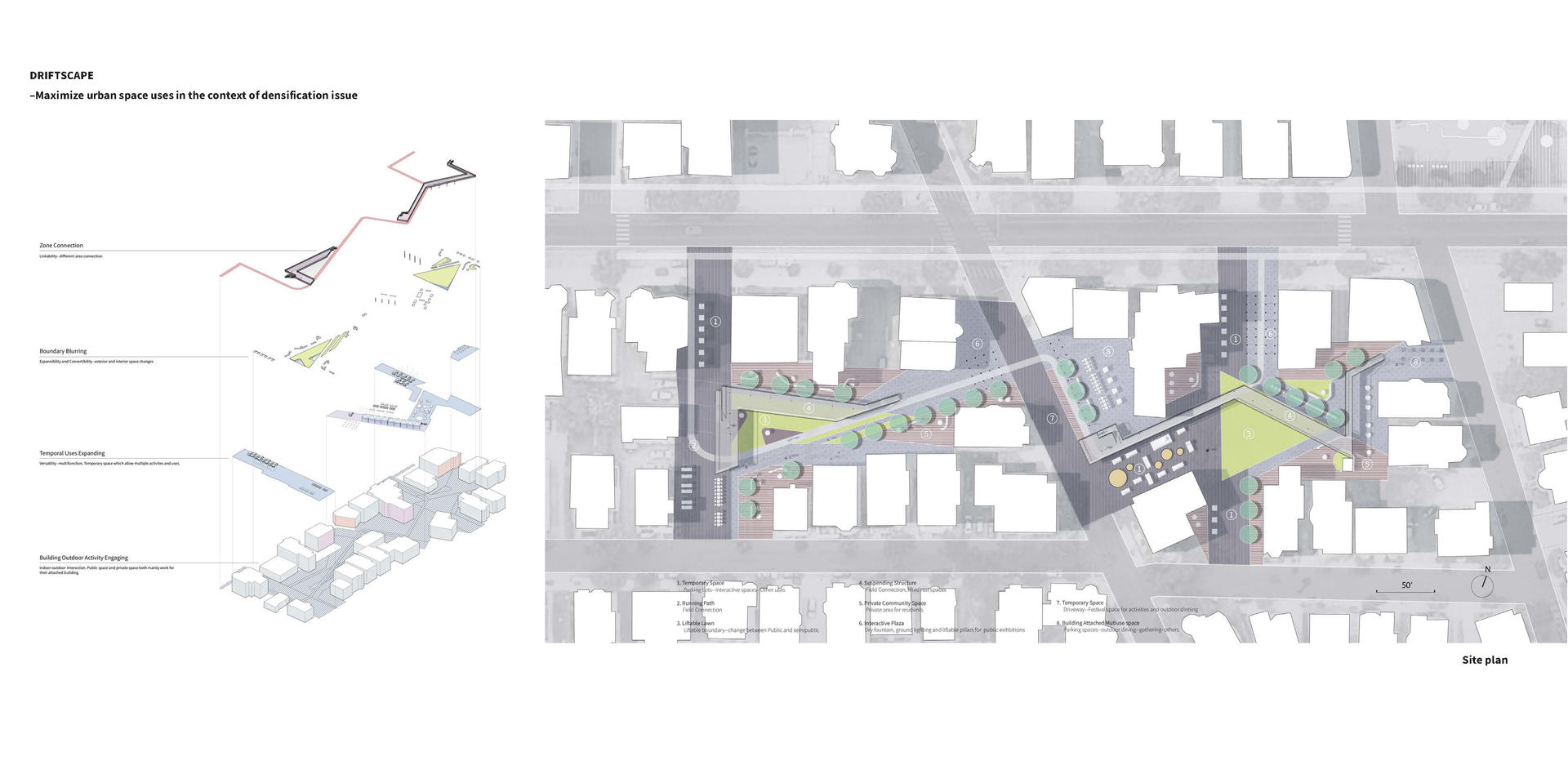
Space Boundary Blurring and Temporal Uses Application
Image
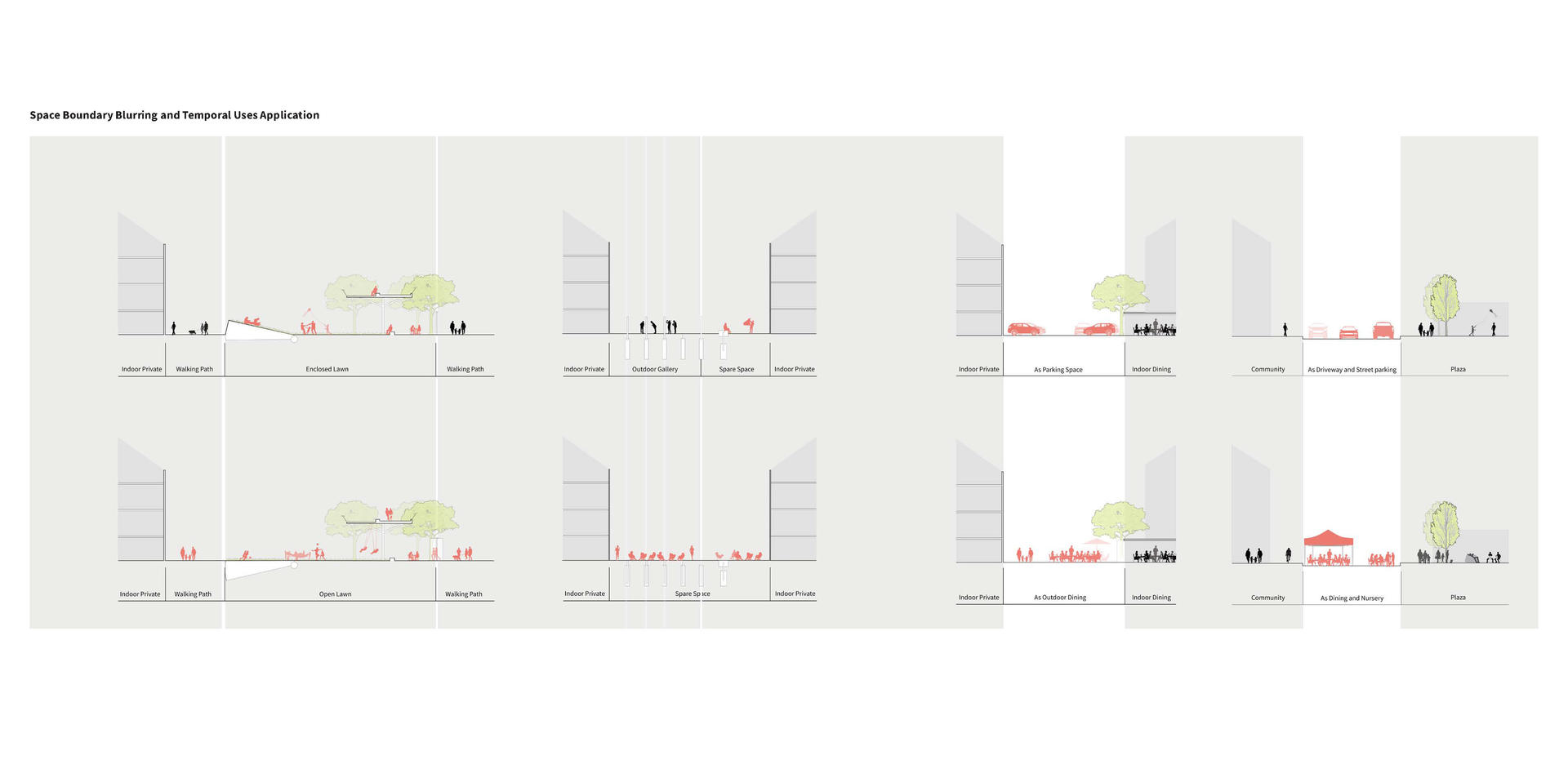
Inner Community Drifting Space Community Engagement and Space Drifting
Image
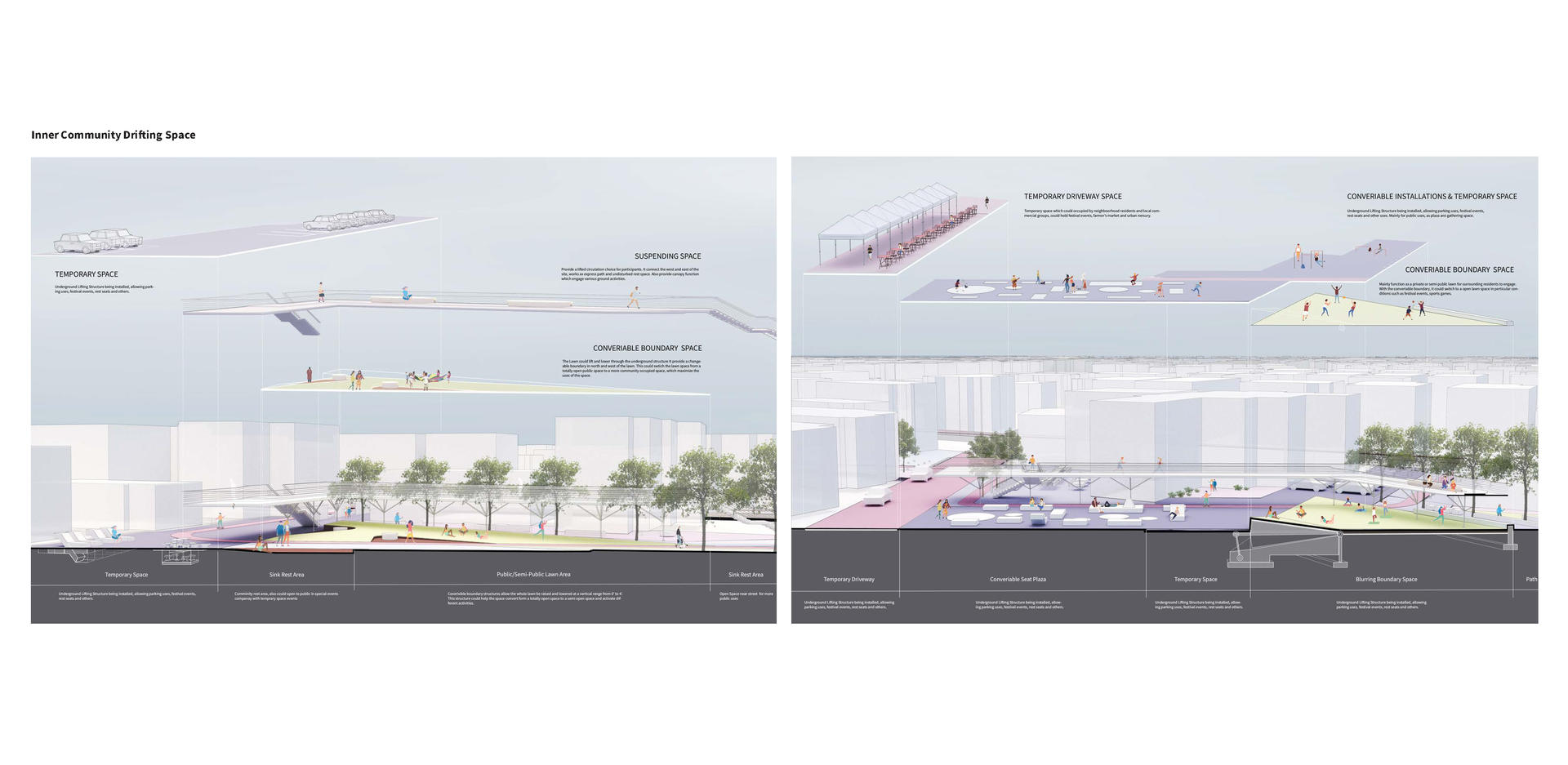
Inner Community Drifting Space
Image
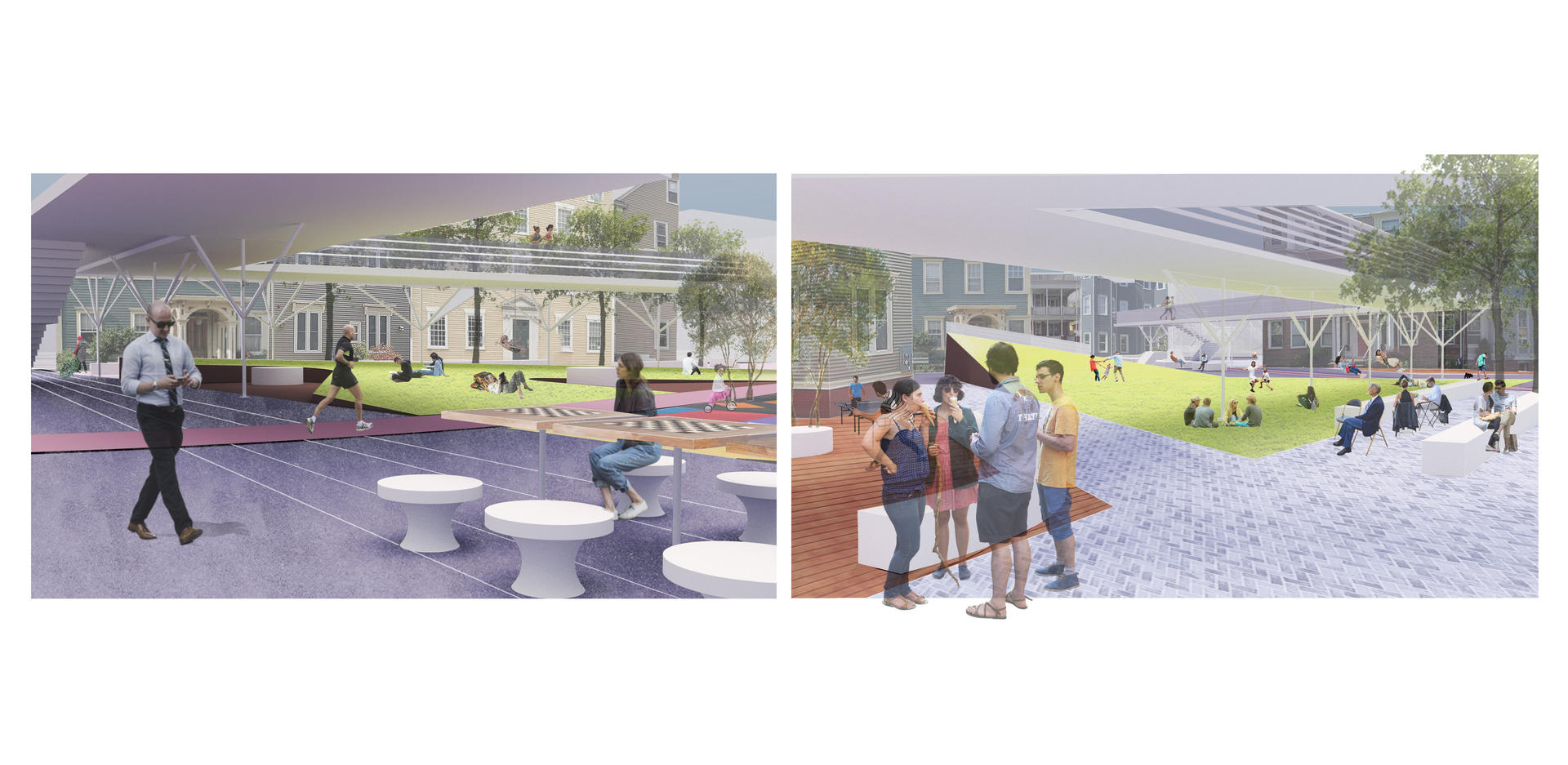
Downtown Space Analysis and Participants Flow, Site Planning
Image
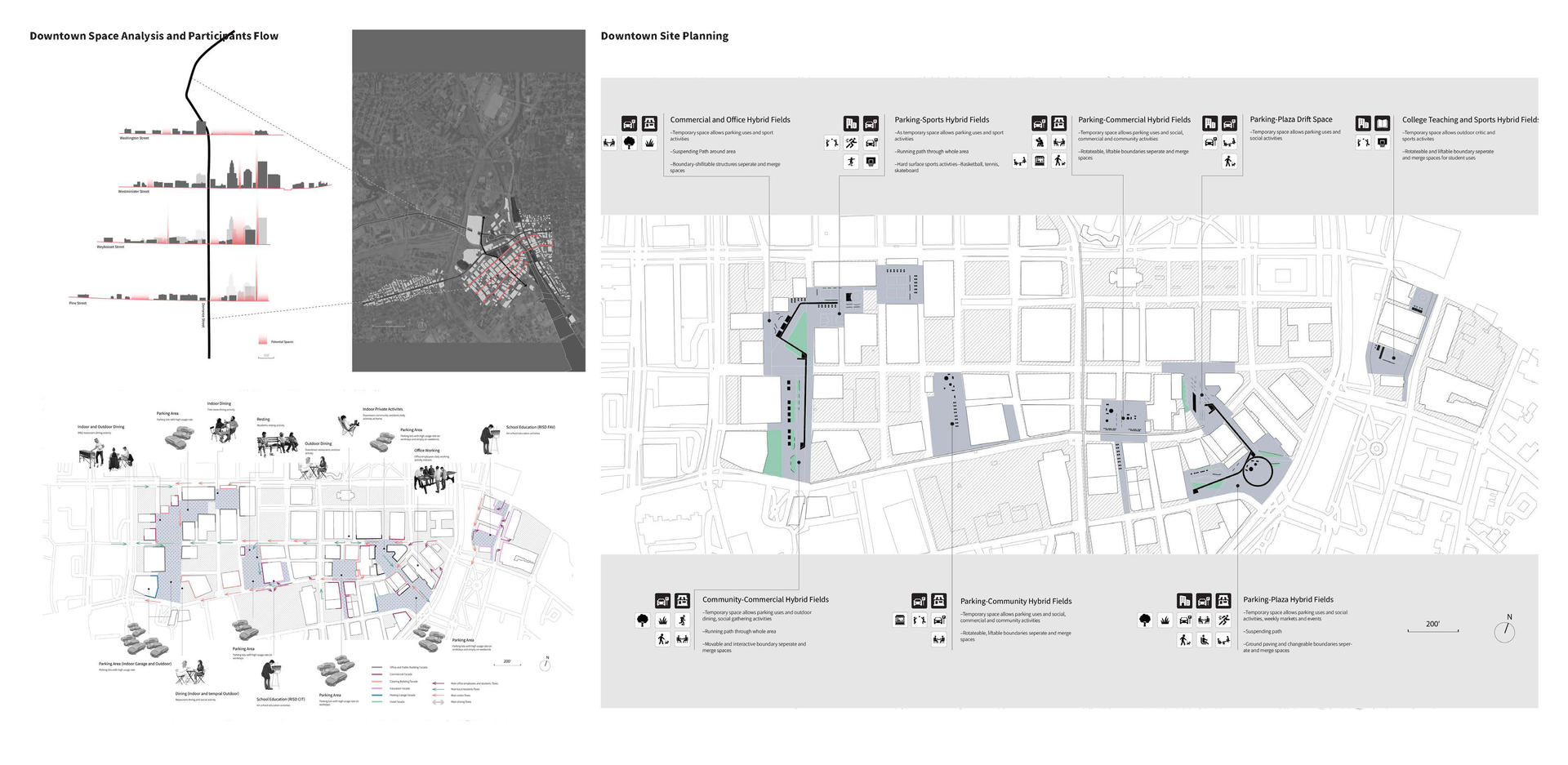
Inner Downtown Drifting Space Participants Engagement and Space Drifting
Image
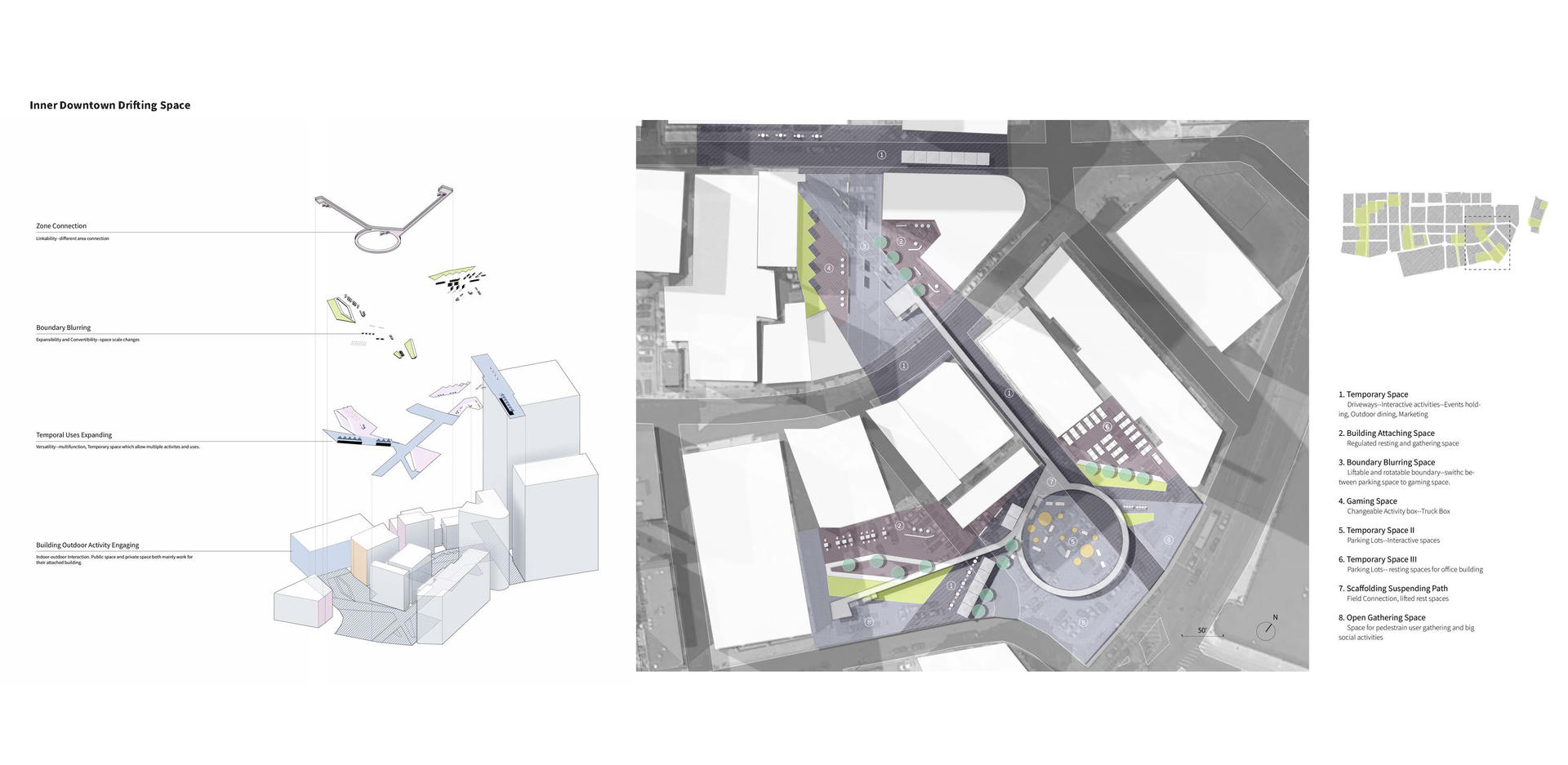
Space Drifting with Space Usage Changes and Occupations
Image
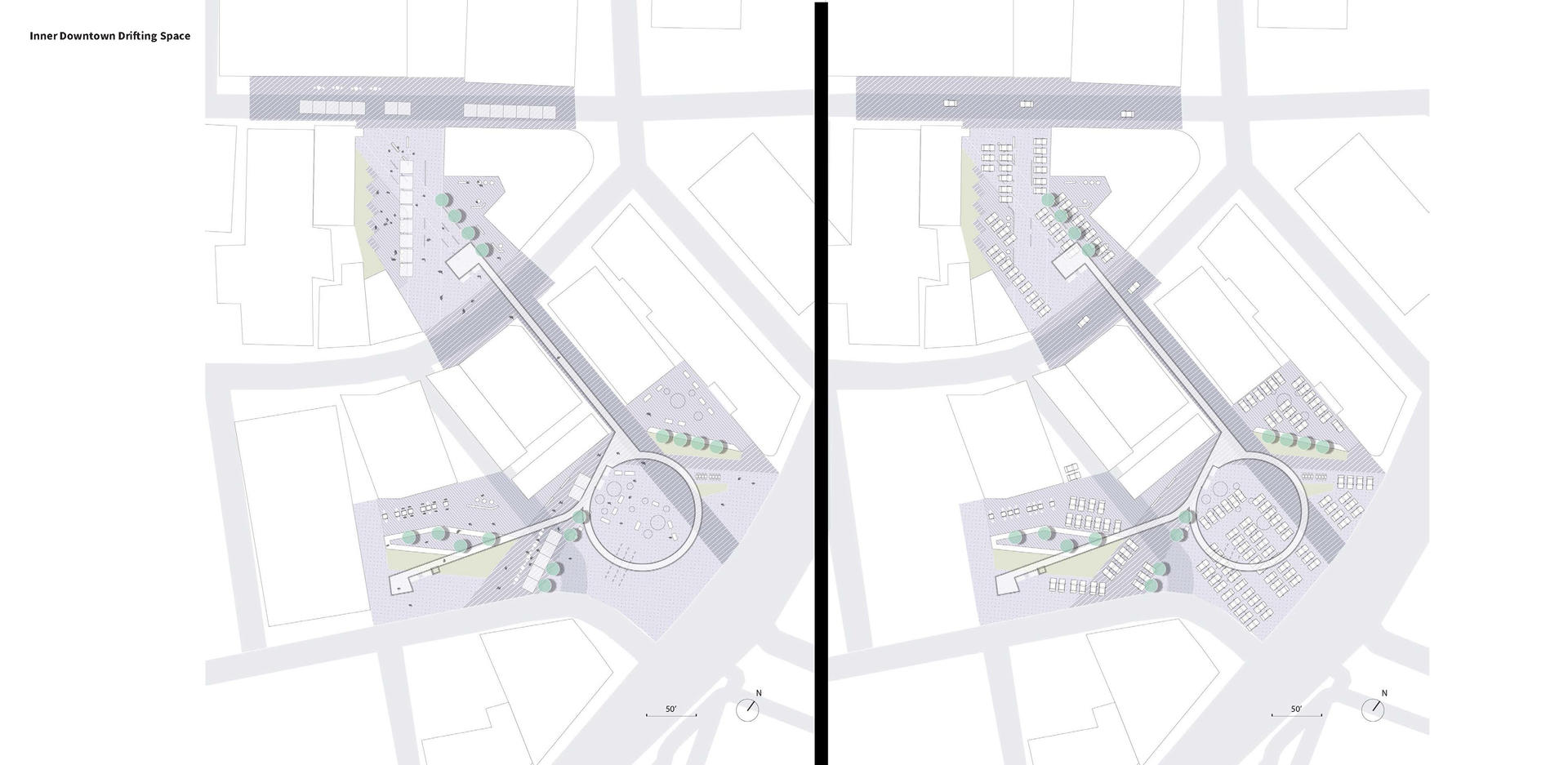
Inner Downtown Drifting Space
Image

